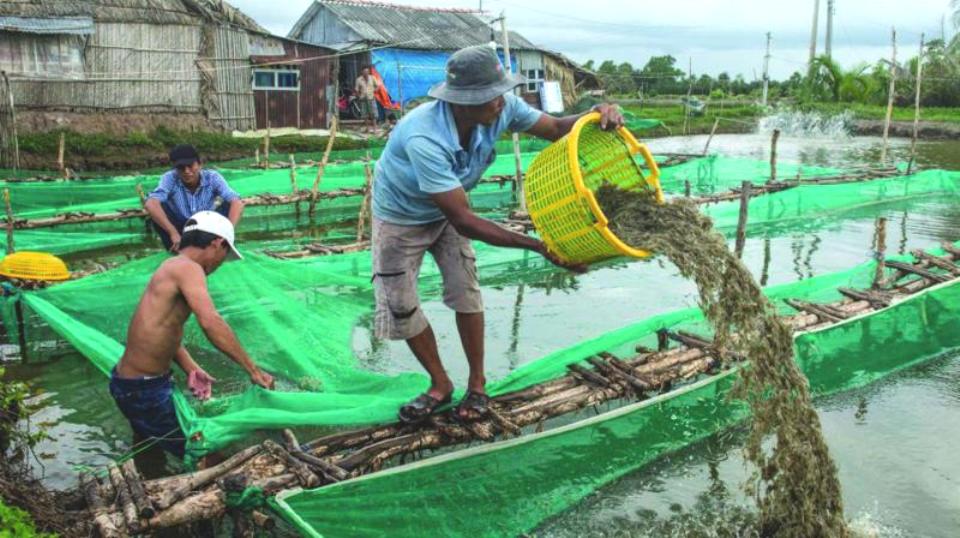Specials
Shrimp, Mussel And Fresh Water Fish Farming Can Offset Tourism, Mining Biz Loss In Goa: Goemcho Goenkar

Panaji: Research conducted by experts and volunteers of the CPIE India (Centre For Promoting Indian Economy) as part of it’s Goa Village Project (which was initiated in Sept-Oct last year) shows that large scale, organized shrimp, mussel and fresh water fish farming in the interiors of Goa or in Goan villages can more than offset the losses caused to local businesses and villagers due to the slump in tourism (due to the Covid pandemic) and the closure of the mining business in the State.
Shrimp farming is an aquaculture business that exists in either a marine or freshwater environment, producing two to three varieties of shrimp or prawns for human consumption. Fresh water fish is cultivated in ponds or trenches created specially for the purpose and about 40 to 60 percent of it is consumed by the fish processing industry.
While the coastal areas of rural Maharashtra including villages in Ratnagiri and Sindhudurg have taken up aquaculture in a very big way, Goa was still dependent on tourism for its revenue, a mistake that is now very apparent to Goans across the state, thanks to the Covid pandemic.
Aquaculture farmers can earn an income of Rs 10 lakh in the shrimp season that lasts for six months from May to October. Approximately, about 4,000 kgs of shrimps can be produced from a pond excavated on an acre of land, which can fetch a price of Rs 250-350 per kg.
After excluding costs, and other expenses, the net profit can range from 4-5 lakh per acre, which is more than any other crop that is sowed in a conventional cropping system.
Besides, the demand for seafood including shrimps, mussels and fresh fish is drastically higher in Goa, compared to other states, and even without foreign tourists, the local consumption is high enough, and the high price of beef and mutton could be a huge incentive for aquaculture farmers in Goa, says Goemcho Goenkar.
Being a tourist destination with the majority of the local population consuming fish, there is a high demand for finfish and shellfish in Goa and the present demand far exceeds the normal supply, CPIE India has pointed out.
Goemcho Goenkar which is promoting home horticulture, kitchen farming and kitchen gardening in Nuvem and Curchorem to boost farm produce in the State, will also take up Shrimp, Mussel And Fresh Water Fish Farming in a professional manner, starting next month.
We are launching the first aquaculture project on a small scale at Curchorem. Depending on the success, we will replicate the model in different parts of Goa, said a spokesperson for the CPIE India, which is providing the technical expertise, resources and domain knowledge for the purpose.
According to Flynn Remedios of Goemcho Goenkar, in Punjab farmers who were losing fertile land due to the increased salinity of the soil, resorted to shrimp farming as a last ditch effort to survive. Today around 500 acres of land is under shrimp farming in Punjab, giving the farmers very good returns. We are inviting volunteers to support this activity, to co-ordinate with the farmers at the local level.
Shrimp farming, or the cultivation of prawns, which are high in demand and fetch good money is a very lucrative business, and can be easily launched in interiors of Goa with minimum investment, the Goemcho Goenkar and CPIE India report reveals.
This is a completely organic, natural project. No chemicals or artificial products will be used. Mussel farming in the brackish waters of Goa is already a success story and we are trying to replicate it at different parts of Goa, Remedios said.
Green Mussel, (Perna viridis), locally known as “Xinanneo” in Goa is found to be a major shell fish species under the group bivalves relished by Goan people. It is very popular in sea food restaurants in the State and very often out of stock or sold at a huge premium. A single piece of the mussel of size of 40-60 mm with an average weight of 30-33gm costs around Rs. 8 to Rs 20 in the retail markets of Goa, depending on availability. This species grows well in brackish waters and is relished by sea food lovers all over the country.
Shrimp and mussel aquaculture is a godsend for farmers whose land is not usable for any other crop due to higher salinity. Goa has an enormous brackish water resource potential. However, the lack of awareness about the relevant technology and methodology among the people is the major cause for the poor growth of the local aquaculture sector.
According to aquaculture experts, green mussels usually grow to the size of between 40 and 60 mm with an average weight of 30 to 33 grams and grow well in brackish waters with a salinity ranging from 25 to 32 parts per thousand (ppt). Farmers usually don’t have to use any extraneous inputs like feed, fertilizer and other materials, making maintenance of the culture system comparatively easier than fish farming.
Culture periods usually begin from November or December and extend up to May with harvest being done before the onset of the monsoons in June to prevent the salinity thus affecting the mussels.
Not just setting up the aquaculture projects, Goemcho Goenkar is arranging to sell the produce in different markets of India, giving the farmers direct access to buyers.
Goans who are interested in starting either kitchen farming, shrimp, mussel or fresh water fish farming can contact Goemcho Goenkar on email goemcho.goenkar AT gmail.com, with their name, address, location, contact numbers and details of the land available in their vicinity for cultivation or aquaculture.






































